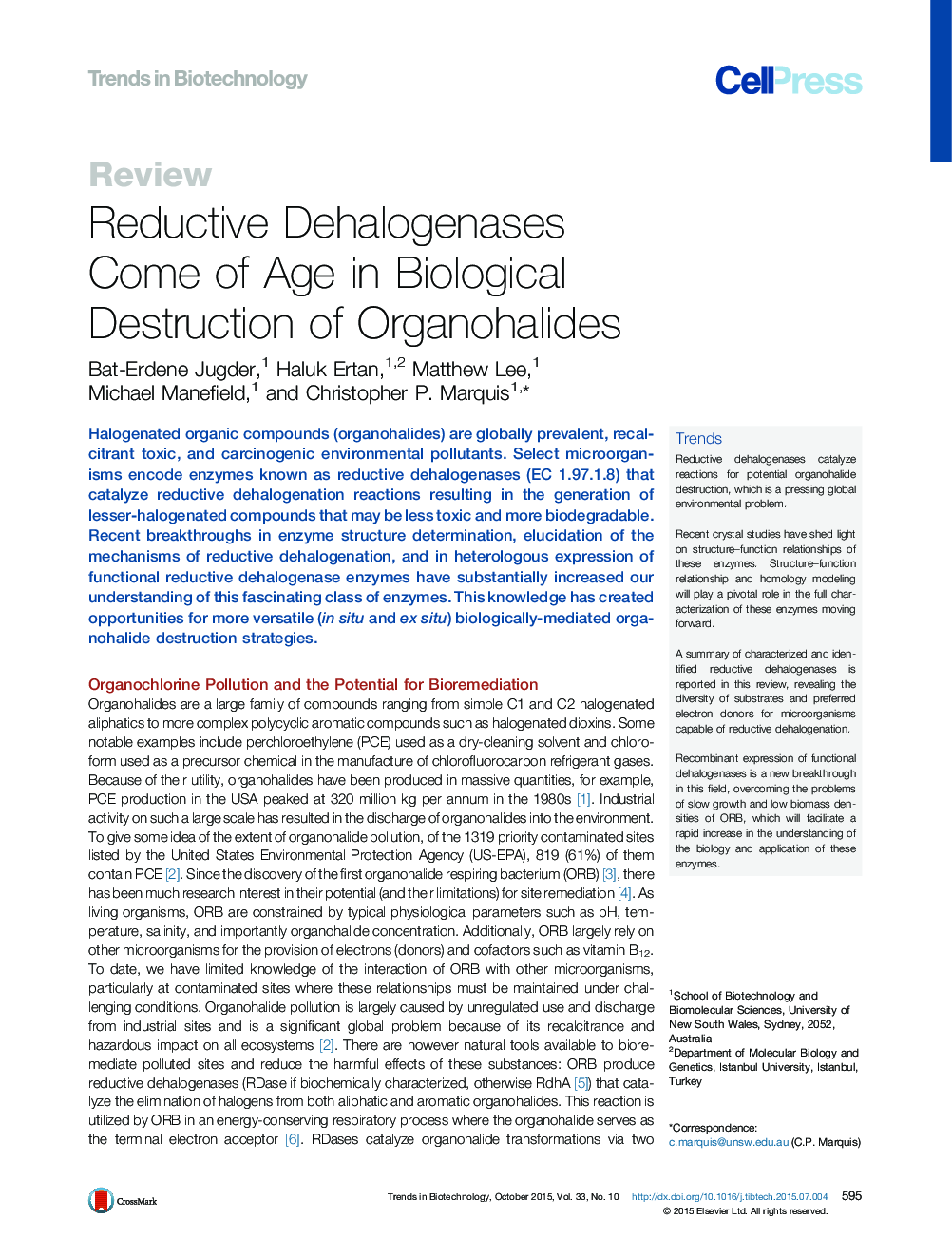| Article ID | Journal | Published Year | Pages | File Type |
|---|---|---|---|---|
| 36891 | Trends in Biotechnology | 2015 | 16 Pages |
Halogenated organic compounds (organohalides) are globally prevalent, recalcitrant toxic, and carcinogenic environmental pollutants. Select microorganisms encode enzymes known as reductive dehalogenases (EC 1.97.1.8) that catalyze reductive dehalogenation reactions resulting in the generation of lesser-halogenated compounds that may be less toxic and more biodegradable. Recent breakthroughs in enzyme structure determination, elucidation of the mechanisms of reductive dehalogenation, and in heterologous expression of functional reductive dehalogenase enzymes have substantially increased our understanding of this fascinating class of enzymes. This knowledge has created opportunities for more versatile (in situ and ex situ) biologically-mediated organohalide destruction strategies.
TrendsReductive dehalogenases catalyze reactions for potential organohalide destruction, which is a pressing global environmental problem.Recent crystal studies have shed light on structure–function relationships of these enzymes. Structure–function relationship and homology modeling will play a pivotal role in the full characterization of these enzymes moving forward.A summary of characterized and identified reductive dehalogenases is reported in this review, revealing the diversity of substrates and preferred electron donors for microorganisms capable of reductive dehalogenation.Recombinant expression of functional dehalogenases is a new breakthrough in this field, overcoming the problems of slow growth and low biomass densities of ORB, which will facilitate a rapid increase in the understanding of the biology and application of these enzymes.
